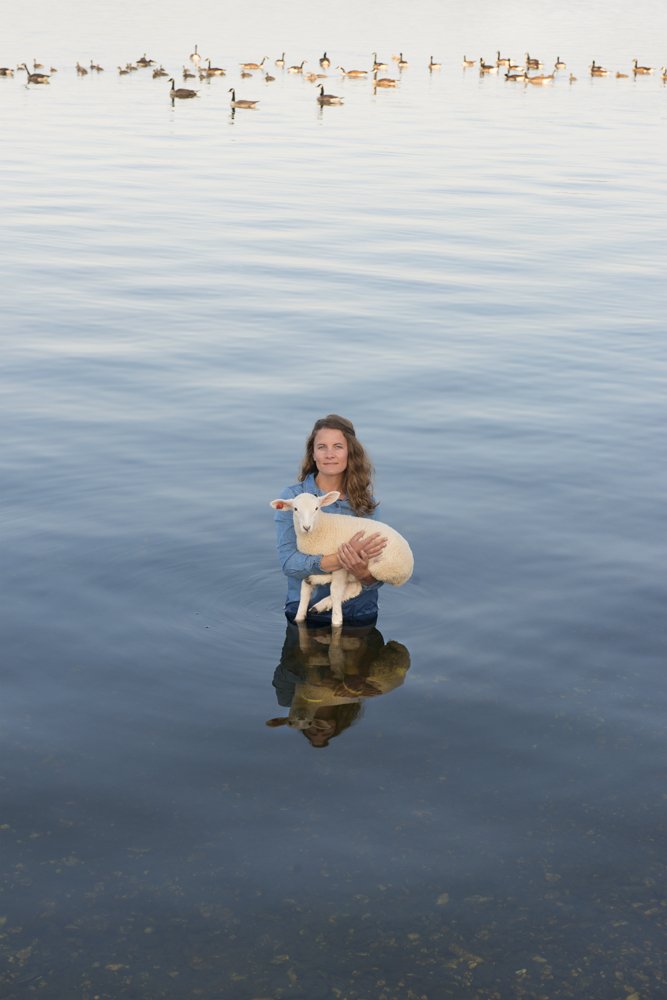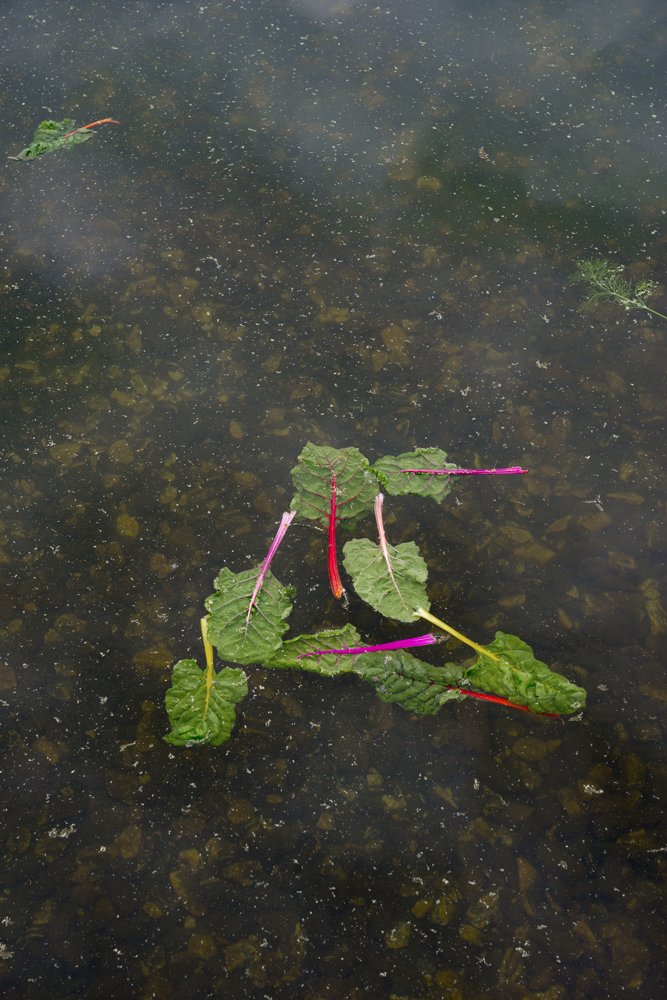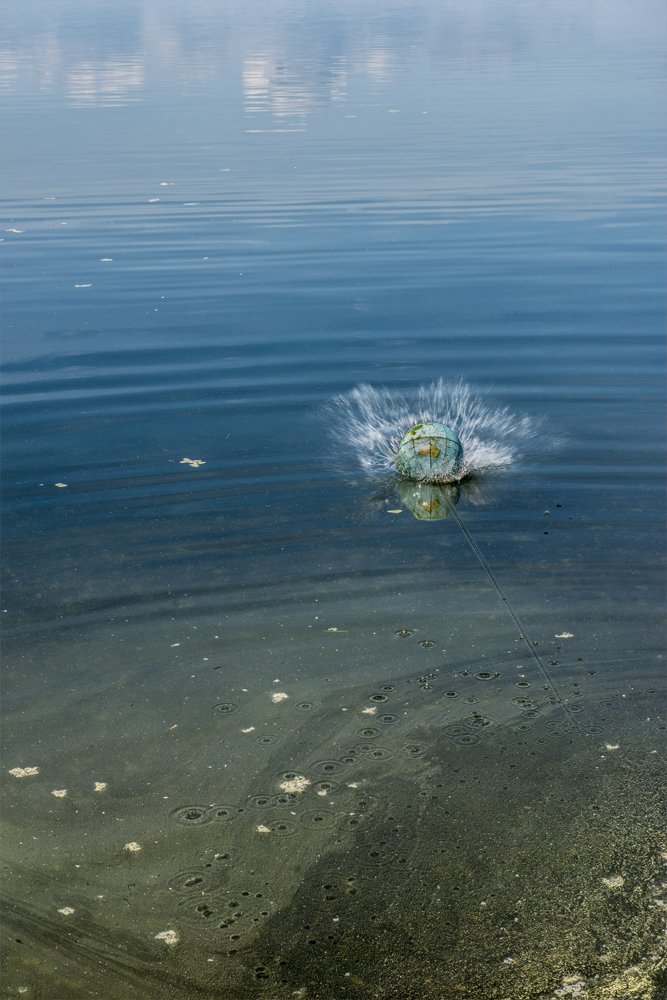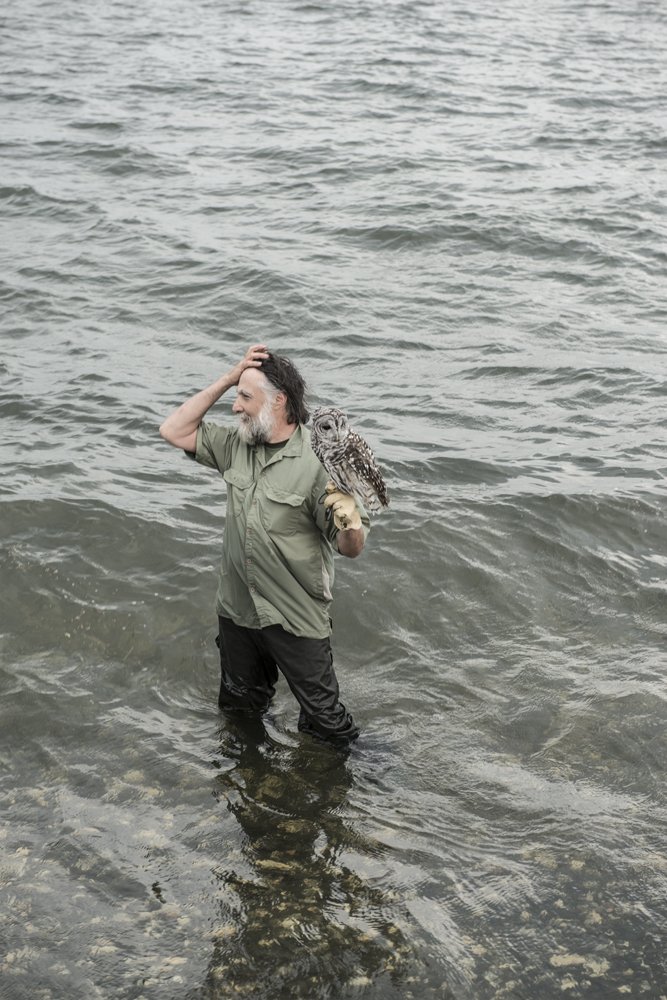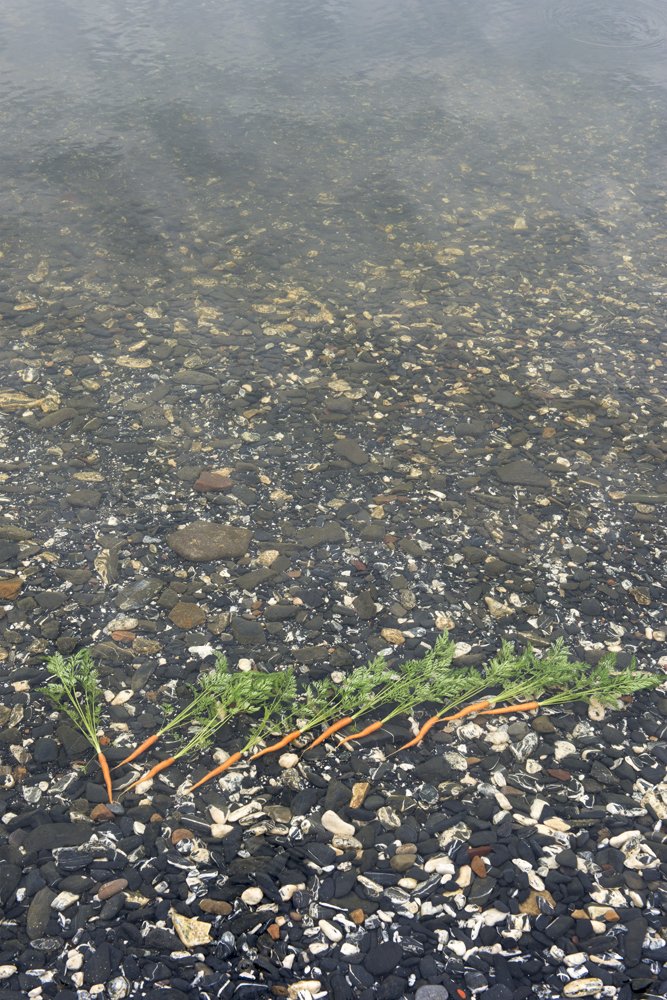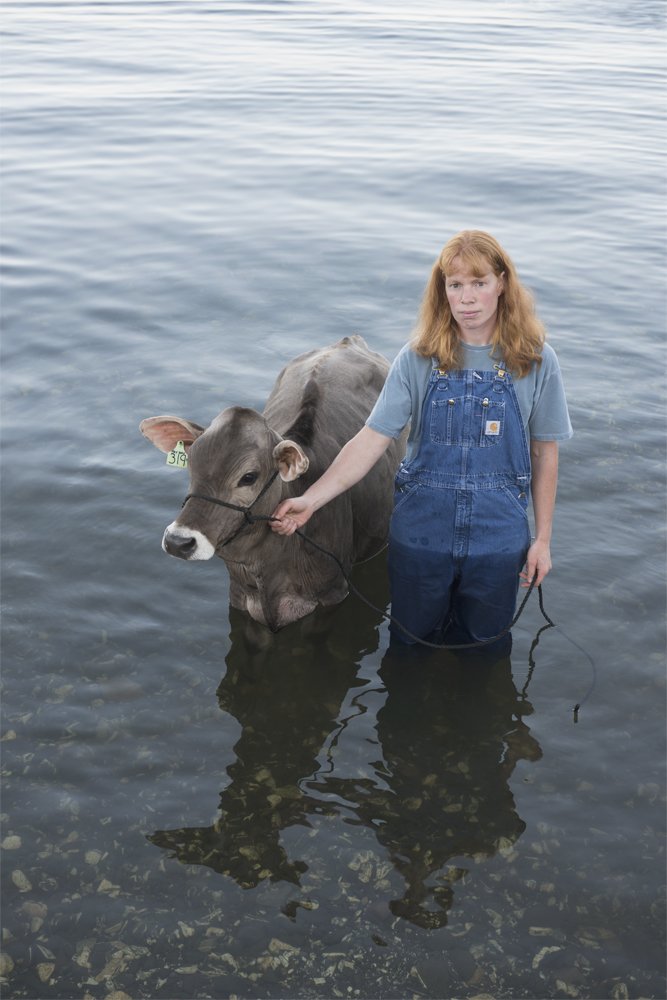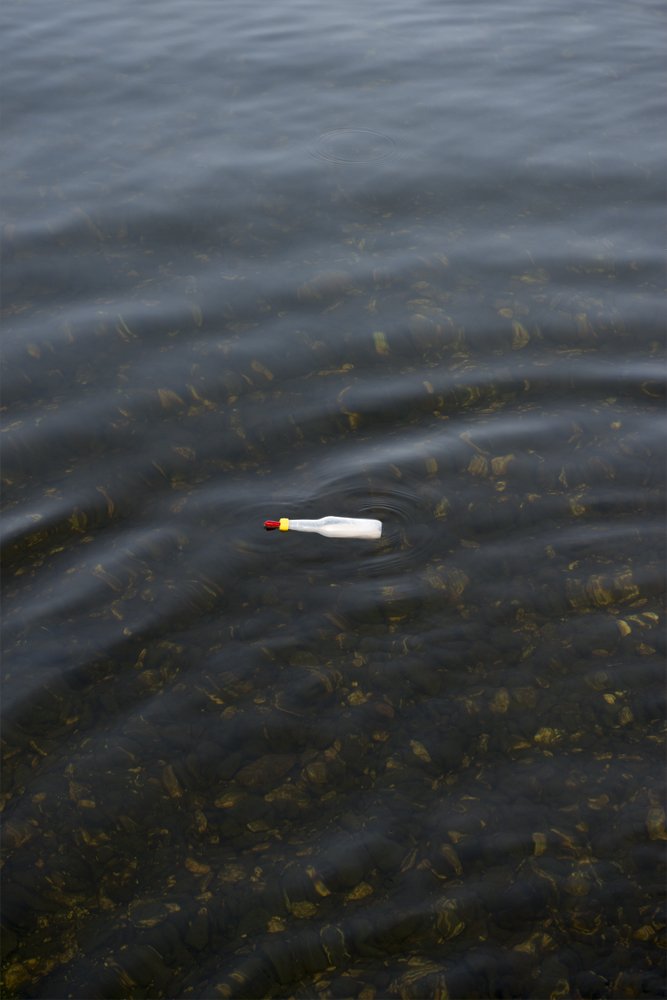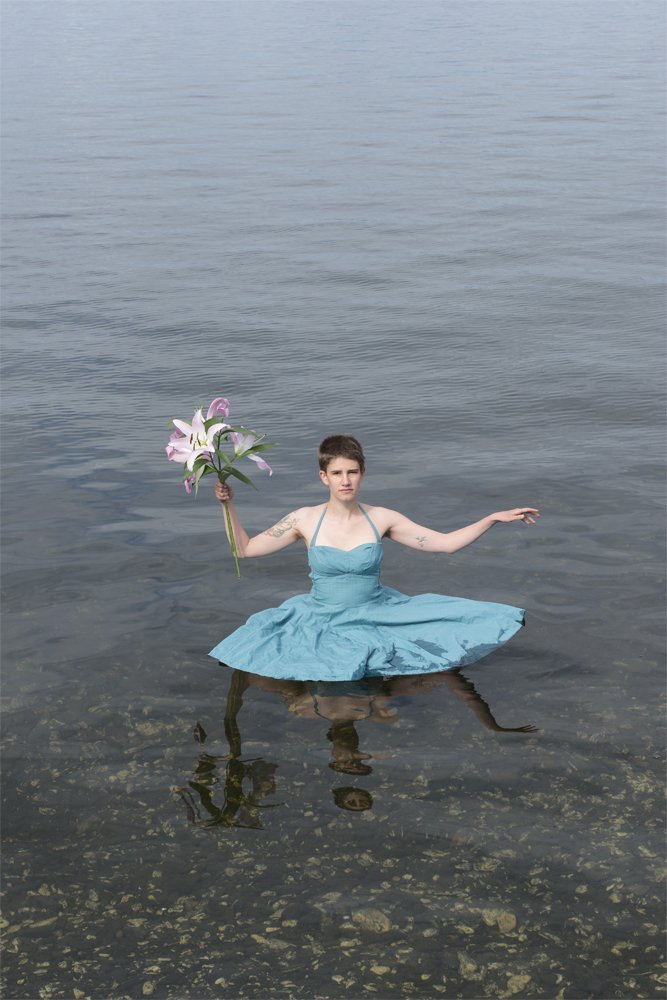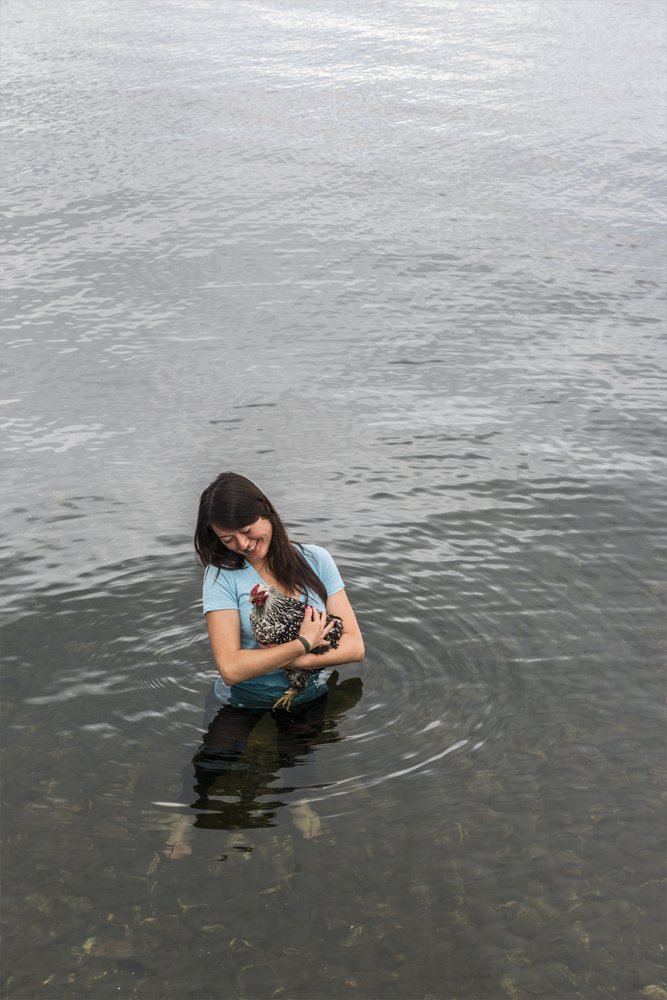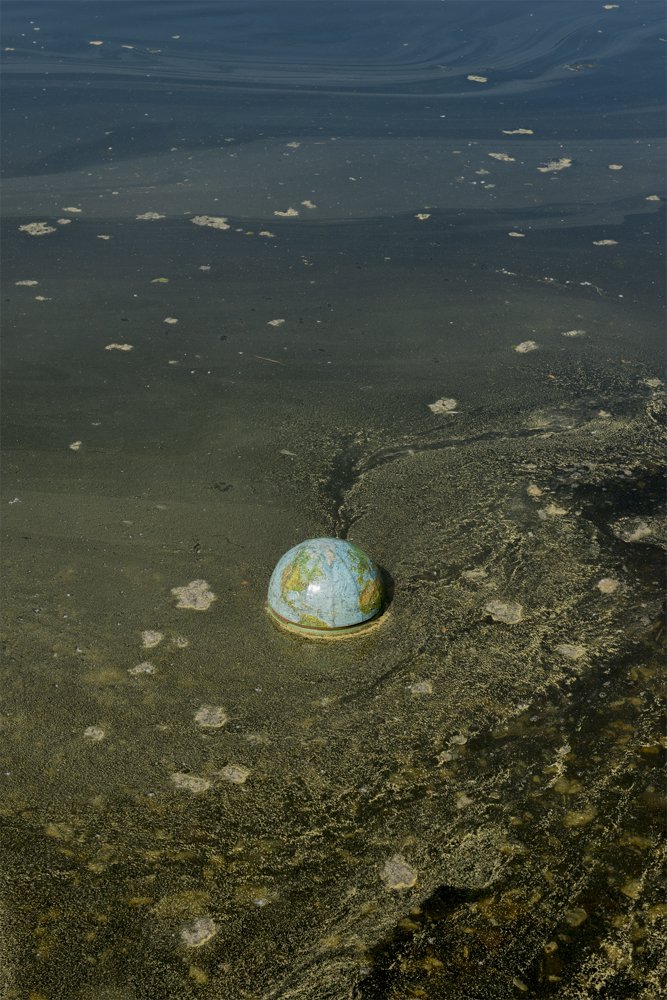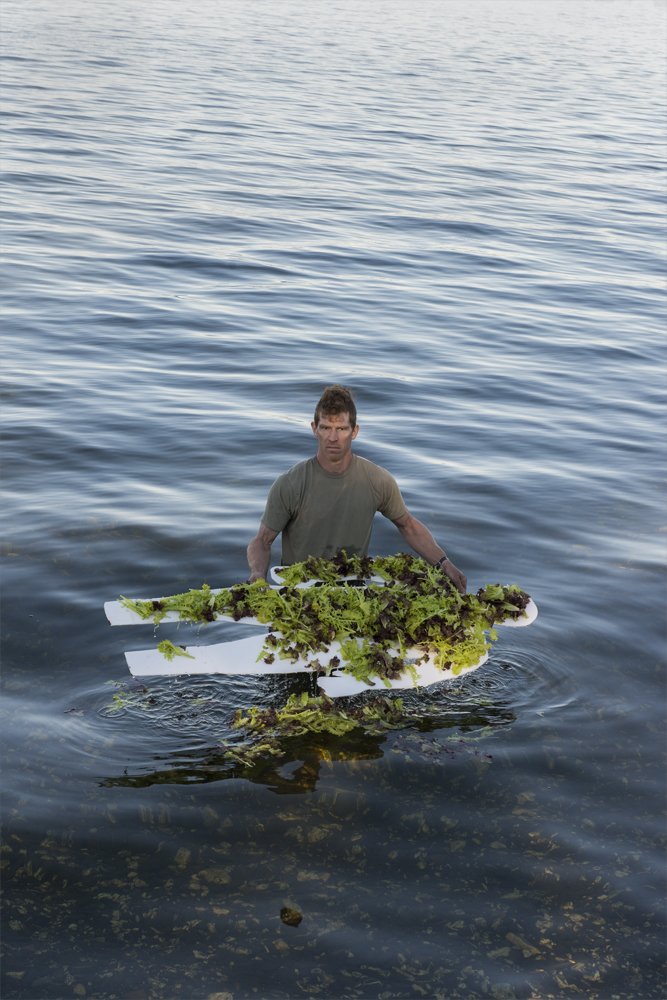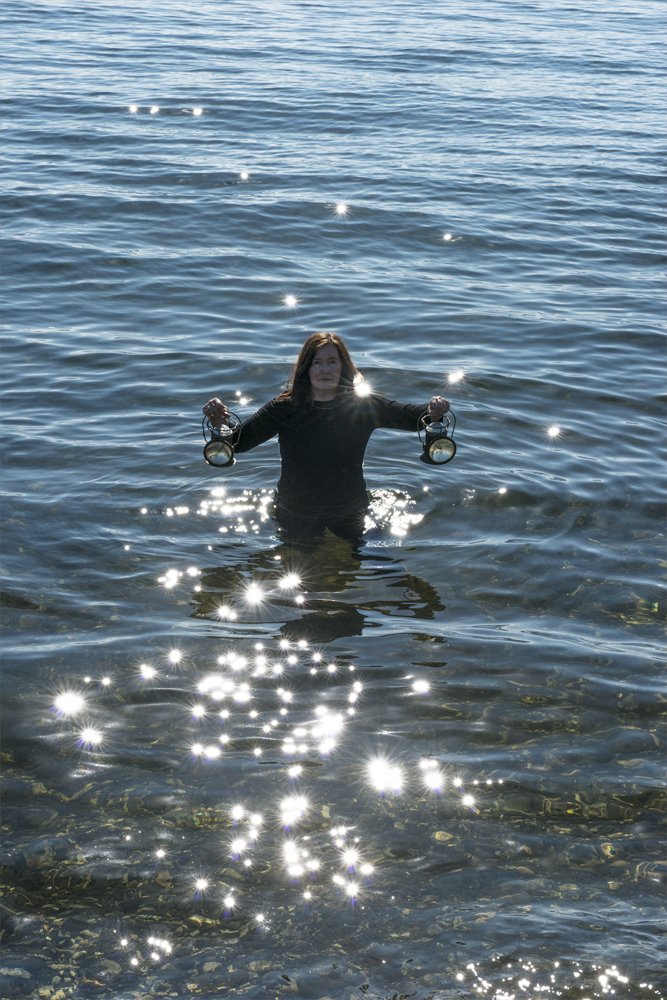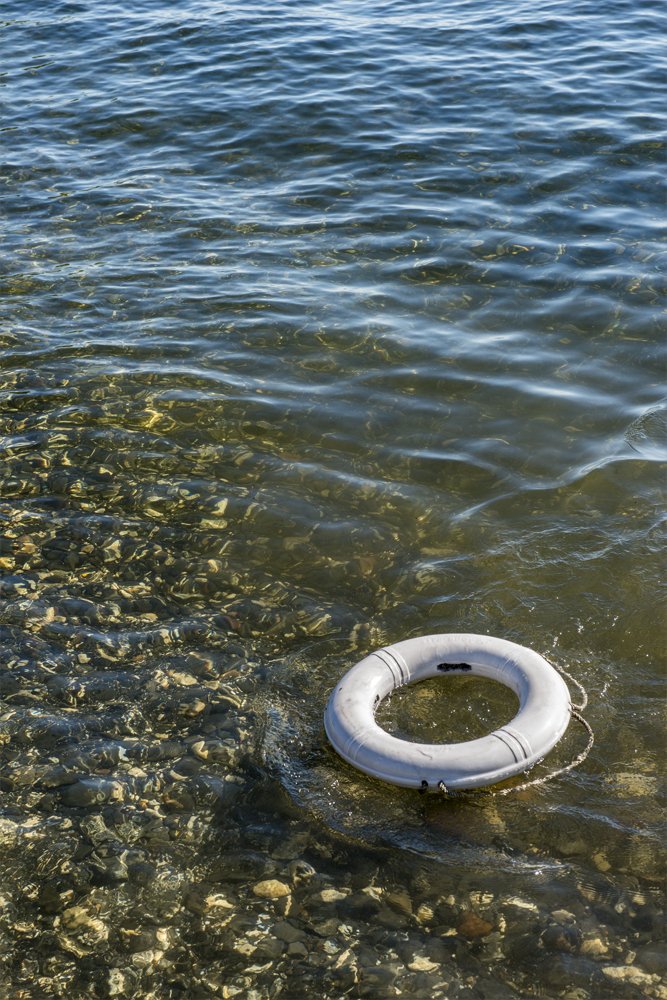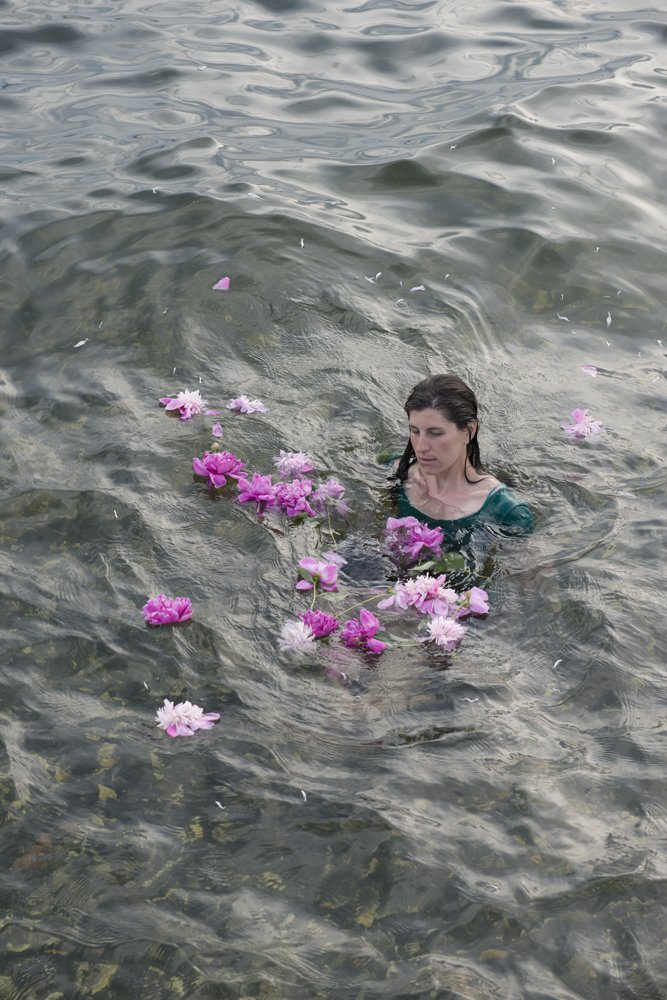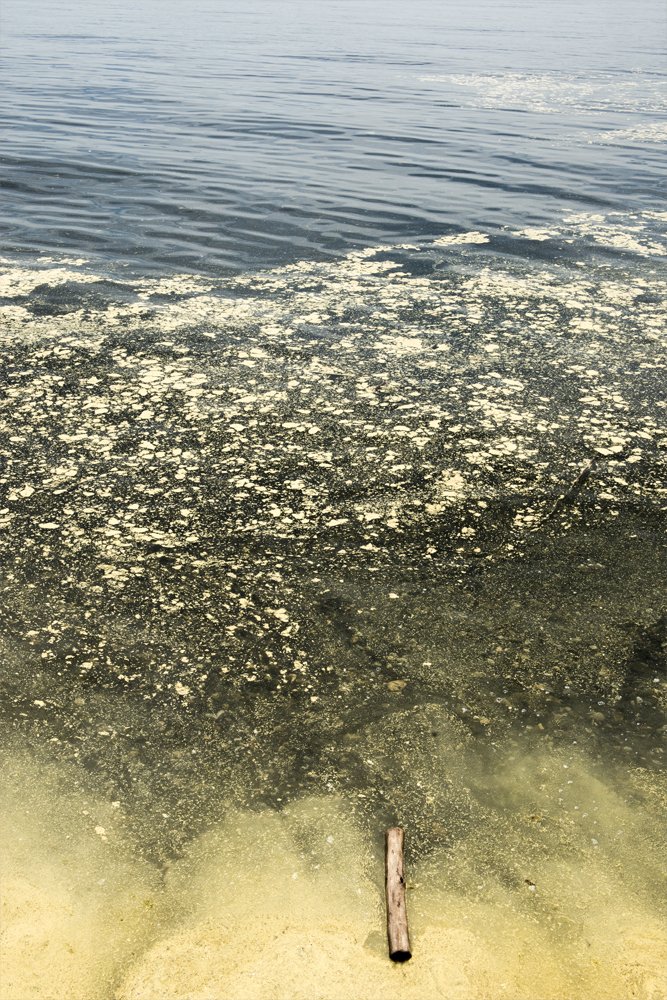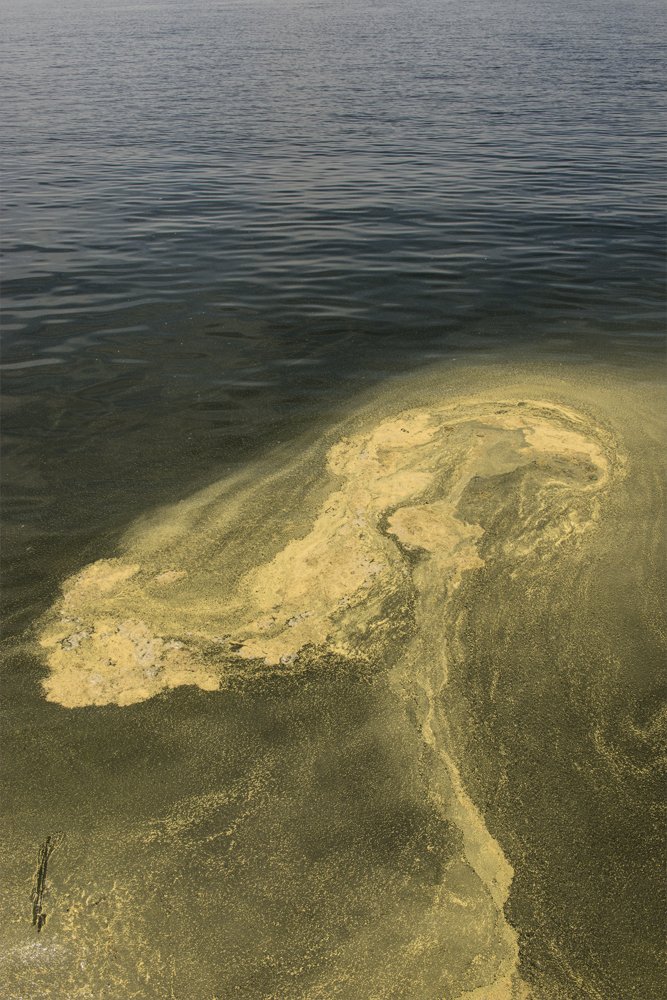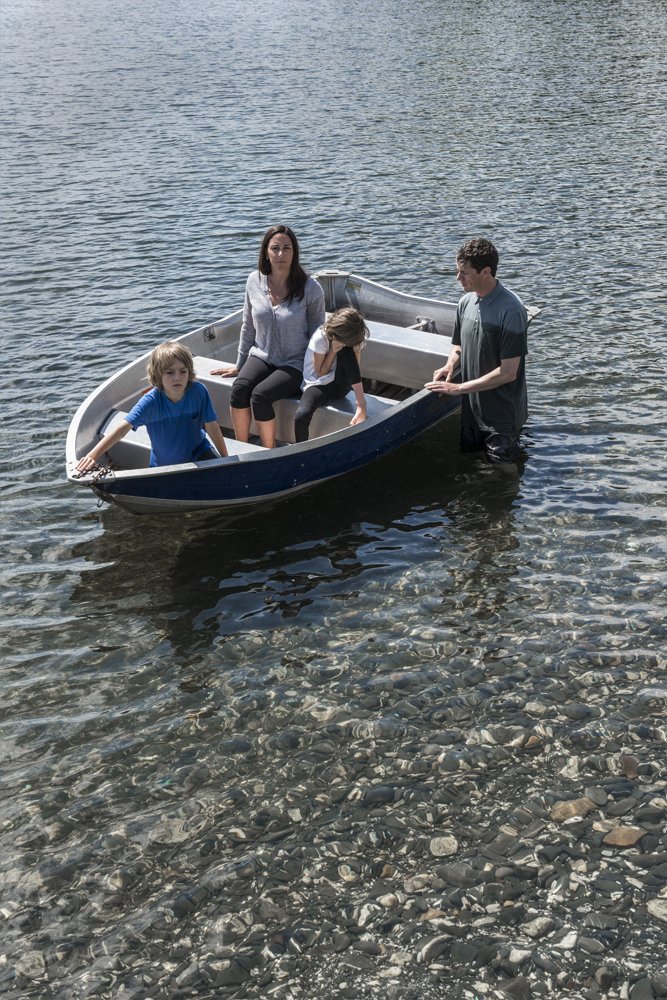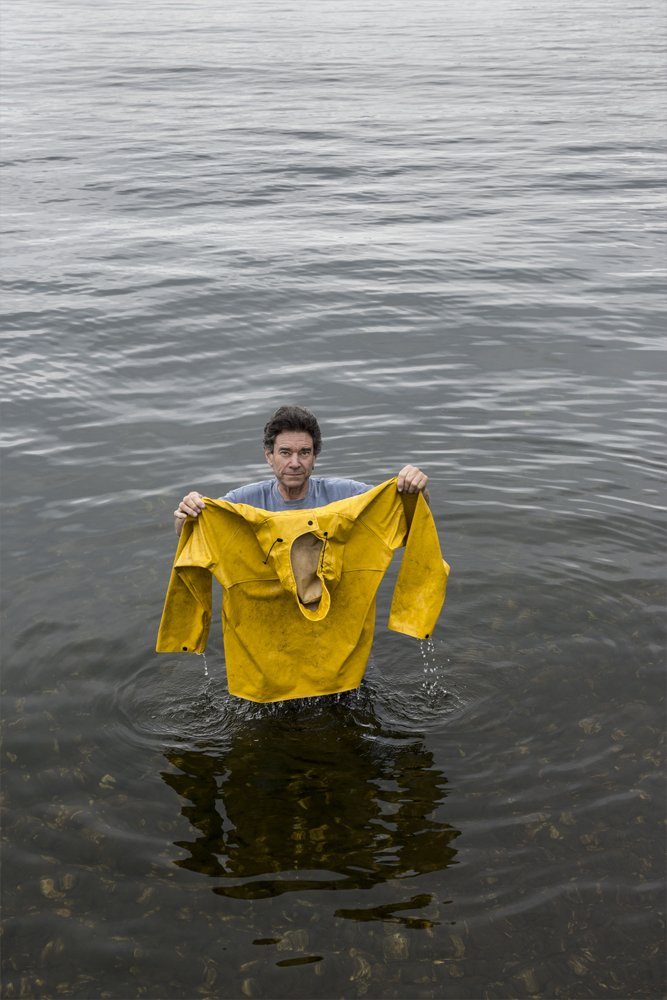DJ Hellerman, chief curator and director of exhibitions at Burlington City Arts, commissioned artist Judy Natal to create a body of work that would enable Natal to continue her future-focused, environmental art in conjunction with the exhibition Of Land + Local 2014. The shoreline of Lake Champlain at Shelburne Farms, a historic Vanderbilt estate designed by Frederick Olmsted. Literally gone to ruin by the 1970s and resurrected as an inspired eco-farm teaching by example sustainable farming and conservation became the site for Natal to imagine the future, illuminate the present while creating visual dialogues regarding the environmental issues currently at play in the region.
The water’s edge is packed with fragile ecosystems that in order to thrive depend upon our custodial attention to its maintenance. Burlington’s beloved recreational areas, sunset beaches, nostalgic campfire gatherings, local, sustainable farming practices and sunken ships, are juxtaposed with blue-green algae blooms, excess phosphorus run-off and poor water quality, invasive species, local farming run off, and loss of biodiversity, all of which represent perfect binaries where past, present and future collide.
Natal’s creative practice is defined by in-depth research, reading, looking and making. While researching information for this work, she came across this quote by David Nix: “when the thin veneer of civilization is stripped away, and all hope is lost, what remains is a true glimpse of humanity at its worst and best, and the question “what makes us human” leaps to the forefront of existence.” This kernel, this “glimpse of humanity” is at the very core of Natal’s art practice, her “mission”. How does art find hope through awareness, knowledge, social engagement, and our own humanity? The question “what makes us human” is a constant, nagging, question that is ever present in her work. She enjoys the collision of odd intersections of humor with controversy, while deciphering areas of inquiry that are potentially deemed too wacky, too improbable, and too speculative to be “real” science. It is in this creative space of the unknowable, that Natal’s work resonates.
The title The Floating World directly references a Japanese concept Ukiyo-e, which literally translates to “floating world”. This defined 17th-19th century prints and paintings of the merchant class who found themselves beneficiaries of rapid economic growth, and the term came to describe their hedonistic lifestyle which seems a unique parallel to today’s economic status in America. This concept was central to forming the West’s perception of Japanese art. Ukiyo-e also translates as the sorrowful world and this duality seems an appropriate one as America expands and contracts between great wealth and poverty, and the tides of displaced cultural anxiety is at its highest point since the World Wars.
